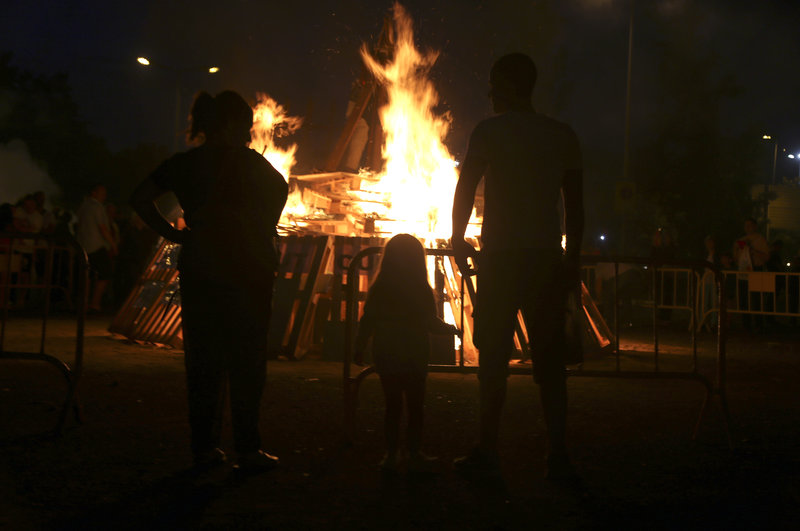Girona, June 2016
Photo: quim puig
The night of bonfires and coca
Every year, the Nit de Sant Joan (Saint John’s Eve) brings together ritual and festivities in a midsummer celebration of the solstice and the birth of one of the most important saints in the Christian tradition. The large bonfires lit all over the country come from the pagan practice of warding off evil forces, although today they are more of a focal point for the communal celebrations that involve consuming the traditional pastry delicacy known as Coca de Sant Joan.
The Bible says that John the Baptist was born six months before Jesus Christ, which is why the saint’s feast day coincides with the June solstice, the longest day of sunlight in the year. Yet, the Nit de Sant Joan on the evening of June 23 (actually two days after the solstice) is above all a nighttime event that is celebrated in places all over Spain, but particularly in Mediterranean areas, such as Catalonia and Valencia.
One tradition peculiar to Catalonia followed on Saint John’s Eve is that of the Flama del Canigó (Canigó flame). Every year since 1966, different groups distribute the flame from the Canigó mountain summit to places all over the Catalan-speaking territories, where it is used to light the Sant Joan bonfires. In fact, it is estimated that the flame is used to light 30,000 bonfires around the Catalan Countries. It is then kept burning until the following year in the 14th-century Castellet tower in Perpignan.

